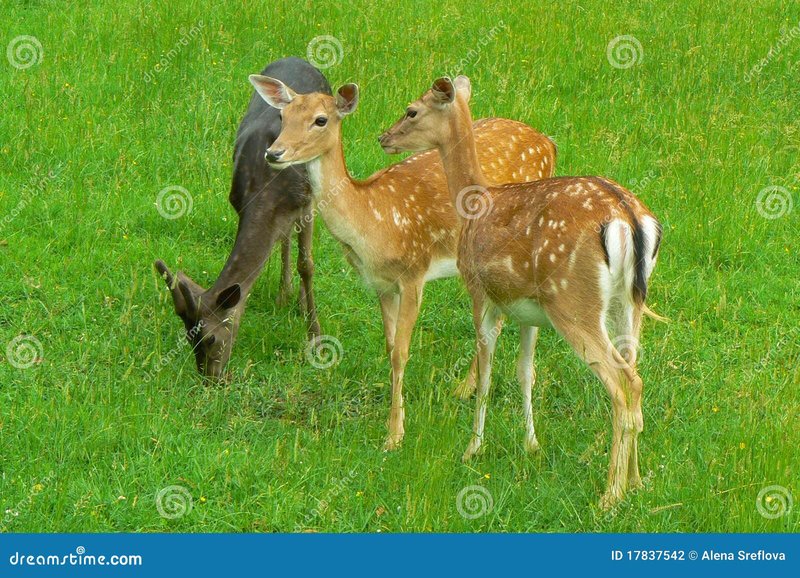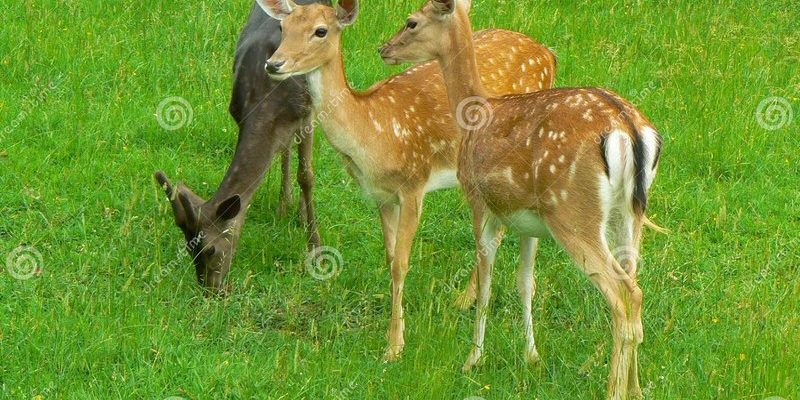
Deer are fascinating creatures, and their parental instincts are nothing short of remarkable. Like many animals, they have specific strategies for ensuring their fawns grow strong and healthy before setting out on their own. Understanding these behaviors not only gives us insight into the life of deer but also enriches our appreciation for wildlife. So, grab a cup of coffee, and let’s explore the beautiful world of deer parenting!
Choosing a Safe Haven for Birth
Before a doe gives birth, she carefully selects a location that offers safety and comfort. Typically, this is a secluded spot, like thick brush or tall grass, where predators are unlikely to spot her. You might think of it as her “maternity ward,” where she can feel safe and secure during a vulnerable time.
Once the doe chooses her spot, she prepares it by creating a nest. This involves flattening the grass and arranging the surrounding foliage to form a protective barrier. It’s pretty amazing how instinct guides these animals. They instinctively know that a hidden area will help shield their fawns from potential threats like coyotes or eagles.
Interestingly, a doe usually gives birth to one or two fawns at a time. This allows her to focus on their care without becoming overwhelmed. Think of it like having just the right number of guests at a dinner party—manageable, yet full of potential!
The Birth of Fawns
When the time comes for the doe to give birth, she often seeks to do so in the early morning or late evening. This is a time when the world is quieter, which further reduces the chances of detection. The actual birth process is relatively quick, and within a few hours, the fawns are ready to stand and walk. It’s almost like an instant transformation from newborn to little explorer!
After birth, the doe typically licks her fawns clean. This isn’t just for hygiene; it also strengthens their bond. By licking them, she helps stimulate their circulation and encourages them to nurse for the first time. You might think of this as a mother’s 101 course in survival from the get-go.
The first few hours are crucial for the fawns. They learn to recognize their mother’s scent and sounds, which is vital for their survival in the wild. In a way, it’s like learning to find your way home, but in the vast wilderness!
Protective Instincts of the Doe
Mother deer are incredibly protective of their fawns. Once the fawns are born, the doe remains close but often leads them to more secure hiding spots. She will sometimes leave them alone for short periods while she forages for food, but she remains vigilant. It’s a careful balance between nurturing and protecting.
During these early weeks, the fawns rely heavily on their mother. If danger approaches, the doe’s instincts kick in—she’ll stamp her feet or snort to warn her fawns and, if needed, lead them away. This behavior is crucial because it teaches the young ones what to be wary of as they grow.
Moreover, if a predator threatens, a doe will often create a diversion, drawing attention away from her fawns. It’s a bit like a parent playing “hide and seek,” ensuring their little ones are tucked safely away while they handle the danger.
Feeding and Growing
As the fawns grow, their diet gradually changes, thanks to their mother’s guidance. Initially, they rely on their mother’s milk, which is packed with nutrients necessary for growth. After a few weeks, the fawns start nibbling on grass and other vegetation, learning what to eat from watching their mother.
This part of deer parenting is fascinating. A doe will often demonstrate by grazing nearby, encouraging her fawns to mimic her behavior. Imagine a parent teaching a child to cook by showing them how to prepare a favorite dish—it’s practical and hands-on!
During this stage, the fawns grow rapidly. They’ll often play together, bounding through the grass, which is not only fun but also helps them develop essential survival skills. These playful moments are crucial, as they prepare the fawns for life outside their secluded world.
Social Learning and Independence
As summer rolls in, the fawns become more adventurous. They begin to explore their surroundings, and this is where social learning becomes key. They watch their mother interact with other deer, learning how to communicate and navigate social structures within their herd.
It’s interesting to note that fawns may also play with other fawns in the area. This peer interaction helps them understand group dynamics. Before long, they’ll learn to understand the nuances of deer language—like the difference between a playful nudge and a warning stomp from fellow deer.
By the time fall comes around, these young deer are nearly ready for independence. They’ll start grazing further from their mother and engaging in more complex social interactions. You can picture it like graduation day, where they’re preparing to venture into a bigger world on their own.
Leaving the Nest
Eventually, the time comes when the fawns are ready to venture out independently. By late summer or early fall, they are usually weaned and can find food on their own—though they might still stick close to mom for a while longer. This phase is bittersweet. The doe has nurtured them from birth but knows they must learn to survive without her.
During this period, you might observe the fawns still linger around their mother. They play, graze, and even share space with her, but they also begin to assert their independence. It’s a natural progression that mirrors many parenting experiences—watching your children grow up and test their wings.
As the fawns leave, they carry the survival skills and knowledge that their mother instilled in them. It’s a beautiful cycle, ensuring the continuation of the species and the balance of life in the wild.
The Role of Environment in Deer Parenting
The environment plays a significant role in how deer raise their young. Factors like the availability of food and safe hiding areas can influence the success of deer parenting. For instance, in areas where food is abundant, fawns are likely to grow more quickly and become stronger.
However, if the habitat is threatened by human activity or predators, it can create challenges for mothers and their fawns. Here’s the thing—deer have adapted well to various habitats, from forests to suburban areas. But that doesn’t mean they’re without risk. Understanding these environmental impacts helps conservationists better protect deer populations and their habitats.
You might be wondering how weather affects these situations, too. Harsh winters can make it harder for does to find adequate food, impacting their ability to raise healthy fawns. In contrast, mild conditions create a more favorable environment for both mothers and their young.
As we talk about how deer raise their young, it’s essential to appreciate the interconnectedness of wildlife with their surroundings. Protecting these habitats gives fawns a better chance at survival.
In conclusion, the journey of how deer raise their young in the wild is a remarkable tale of instinct, adaptation, and nurturing. From the careful selection of a safe birth place to teaching essential survival skills, mother deer showcase a unique blend of protection and freedom. This natural ballet plays out in forests and fields, reminding us of the beauty of wildlife. Let’s work together to ensure these incredible creatures continue to thrive for generations to come.

